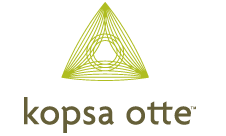The point I want to make is how the government, the House in this case, can make something fairly simple seem very complicated. Below is an illustration of the House version and the Senate version. If the House version passes we are going to need a computer to calculate the refund.
What a mess. Just give us our money back.
Illustration:
For 2007, married taxpayers filing jointly have $175,000 adjusted gross income (AGI), two qualifying children, and a net tax liability of $31,189.
Under the House bill, the recovery rebate credit before the phaseout would be $1,800 [$1,200 (i.e., greater of $600 or net tax liability not to exceed $1,200) + $600 ($300 × 2 children)]. However, the phaseout reduces the $1,800 amount to $550 [$1,800 − $1,250 reduction, i.e., ($175,000 AGI − $150,000) × 5%].
Under the Senate bill, the taxpayers would receive a stimulus rebate credit of $1,600 [$1,000 for married taxpayers filing jointly + $600 (i.e., $300 × 2 children)].
Eligible individuals. Under both bills, an eligible individual would be any individual other than: a nonresident alien; an estate or trust; or a dependent.
Eligible child. Under both bills, for purposes of the additional $300 rebate, a qualifying child would be based on the definition of a qualifying child for the Code Sec. 24 child credit. Under Code Sec. 24, an individual can claim a child credit of $1,000 for 2008 for each qualifying child under the age of 17. Generally, a qualifying child must have the same principal place of abode as the taxpayer for more than one-half the tax year and satisfy a relationship test. To satisfy the relationship test, the child must be the taxpayer's son, daughter, stepson, stepdaughter, brother, sister, stepbrother, stepsister, or descendant of any such individual. A child who is not a citizen, national, or resident of the U.S. can't be a qualifying child.

